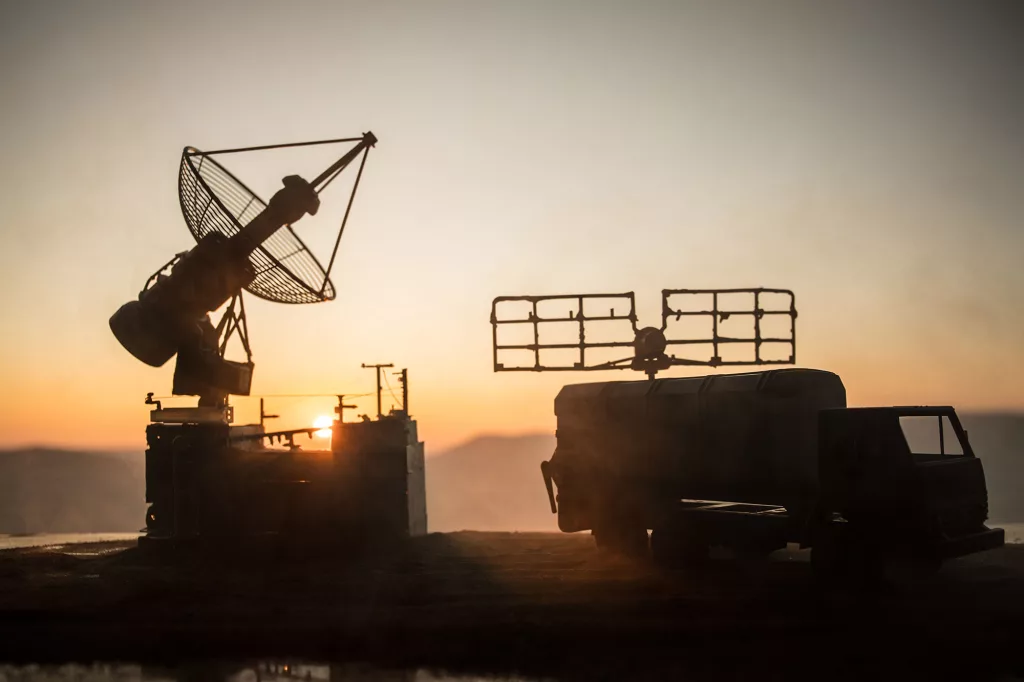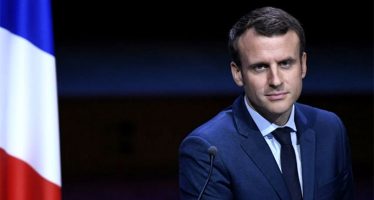Money, Munitions, Military Outlay, and EU’s Plight in War of ‘Catch-up’
There is no more enduring truth than that expressed by Roman statesman and philosopher Marcus Tullius Cicero: ‘The sinews of war are infinite money.’
The peace dividend, now exhausted, delivered European countries €4.2tn (£3.6tn) over the past 30 years — roughly equivalent to a quarter of EU GDP.
The figures come from Bruegel, a non-partisan policy think-tank in Brussels. The institute notes that over the next 30 or so years, a similar amount will be needed to make the EU climate-neutral. At the same time, Europe wants to boost defence spending to re-equip its long-neglected armed forces in the face of Russian expansionism.
Bruegel economists estimate that member states will add around €140bn (£120.5bn) to their defence budgets — about one percentage point of GDP. Sweden has announced a 30 percent increase in defence spending to meet the NATO target of two percent of GDP. Over the past four years, the Netherlands nearly doubled its annual military outlays — to €14bn — and did so almost stealthily, drawing closer to its alliance commitments.

Last year, the Stockholm International Peace Research Institute recorded the steepest year-on-year rise in European military expenditure for 30 years: 13 percent. Finland (36 percent) and Lithuania (27 percent) spearheaded the trend. While defence is not part of its remit, the EU got caught up in the excitement, providing €500m (£431m) to upgrade and expand weapons production.
Panzers
Rheinmetall, the German tank and munitions manufacturer that has seen its stock value triple since the start of the Ukraine war, is leveraging EU cash to take the annual production volume of heavy artillery shells from 450,000 to 700,000. In July, Rheinmetall acquired Spanish defence contractor Expal Systems for €1.2bn (£1.03bn) to boost that output.
Rheinmetall is in talks with the Ukrainian government to build a factory there to produce up to 400 of its Panther KF51 tanks, the successor to the third-generation Leopard 2. Poland has committed to spend four percent of GDP on its military, and Germany earmarked €100bn (£86bn) to modernise the dilapidated Bundeswehr (federal defence) and improve its readiness.
So far, the true costs and effects of these outlays have not yet trickled down to households pinched by a spike in energy prices. How the military build-up will be funded is anyone’s guess. Tax increases seem out of the question, while running up the national debt is an option not available to many — and discouraged by the European Commission.
Harvard economist (and chess grandmaster) Ken Rogoff, a professor of Public Policy, warns of a reality yet to dawn. “Most Europeans have not absorbed how big the long-term effects of a fading peace dividend will be,” he said. “Government are going to have to figure out how to rebalance things.”
German Defence Minister Boris Pistorius, barely nine months into his role, expressed concern that voters may balk at heavy spending on the military. “It requires a totally changed mindset,” he said. Pistorius also called for “an honest discussion” with voters about the real costs of security.
Defence spending is competing for funds with climate change and the greening of the economy. War is raging, but most Europeans cling to a peacetime dream. Opinion polls unfailingly put defence towards the bottom of the list of voter priorities. The economy, healthcare, crime, housing, and immigration claim the top spots.
Slumber, Interrupted
Danes were roused from their slumber when their government permanently removed the popular Great Prayer Day from its public holiday calendar. The aim was to cover some of the 22 billion kronor (£2.5bn) added to the defence budget. In an ironic twist, Great Prayer Day, the fourth Friday after Easter, was conceived as a day to contemplate world peace. Attempts in Germany to scrap public holidays to compensate for additional military spending foundered on voter sentiments.
One way for Europe to shoulder the burden is to follow the US, where the $860bn (£690bn) defence budget is essentially financed through debt. That represents 3.5 percent of GDP, while the fiscal deficit hovers around the six percent mark. While the comparison is perhaps not entirely fair — Europe fares no better, arguably worse — it does illustrate the point that funds can be found if electorates and governments are willing to allow for a wider fiscal gap.
With far smaller fiscal shortfalls, Europe should have room for manoeuvre. Apart from the need to rebalance budgets, European defence spending is plagued by conflicting national priorities, often stemming from the need to maintain a military presence in overseas territories not covered by NATO, or in former colonies that are only nominally independent.
So it comes to pass that the EU, France, and the Netherlands are preserving, and even expanding, the maritime expeditionary elements of their armed forces that project power overseas. Germany, Poland, and the Nordics lack such capability.
Disjointed
Hardware interoperability and compatibility are often lacking. The armed forces of Europe deploy 17 main battle tank types. as opposed to the single one — the M1 Abrams — fielded by the US Army. The same holds true for the 20 armoured fighting vehicles and 27 assorted howitzers in use throughout Europe; America has two of each. The US manages with about 30 major weapon platforms, compared with 178 in Europe. Even platforms shared between allies, such as F35 fighter jets, are hampered by different encryption systems.
The Permanent Structured Co-operation (PESCO) initiative aims to change all that. PESCO is a 2017 agreement between 26 EU member states (only Malta is missing due to a neutrality clause in its constitution). They are united in the pursuit of structural military integration. Washington is not a fan of PESCO, considering it the antechamber of an EU army, which could undermine NATO. An unspoken concern, but no less a factor, is the possible effect on US defence contractors.
PESCO has initiated 68 projects, and a fifth tranche was released in May. It includes the development of a medium-sized helicopter that can operate in high-intensity conflict zones. It is used to protect seabed infrastructure such as pipelines, data cables, and wind-farm connectors.
In a dash to replenish arsenals after decades of neglect, Europe has sparked concerns that its build-up is disjointed, leading to waste, delays, and duplication. A recent report by the Centre for Strategic and International Studies (CSIS), a Washington-based think-tank, stated that “Europeans have not addressed the deeply fragmented and disorganised” generation of forces. Investing more in an inefficient system, it says, will “only marginally improve a dysfunctional status quo”.
The report concludes that the unification of Europe’s defence forces will probably be a “laborious process and a generational effort”.
By Wim Romeijn
Feeding Caesar and Suzana
The European Defence Agency (EDA), which facilitates military co-operation and capabilities between EU member states, has signed-off on eight joint procurement contracts.
They include the provision of 155mm shells to replenish Ukraine’s dwindling supply. Five contracts went to European suppliers. The 155mm ammo is used by French Caesar, Polish Krab, Slovenian Zuzana, and German Panzerhaubitze 2000 howitzers.
An EDA spokesperson said more contracts would be awarded for similar systems. In March, the EDA established a two-year fast-track programme to acquire 155mm artillery rounds with the participation of 26 EU member states, plus Norway. The programme allows for a simplified tendering process and assigns contracts at short notice.
NATO, meanwhile, has pledged to spend $1bn (£801m) on joint procurement of the rounds. US and allied stocks are running low, with the Pentagon vowing to ramp-up production from 24,000 to 80,000 a month by early next year. The US has supplied Ukraine with two million shells of various types, with European countries sending half as many. About 7,700 are fired each day.
The 155mm artillery round was developed in France after its defeat in the 1870-1871 Franco-Prussian War. The French Army was in need of new fortress, and new siege artillery. A committee settled on the calibre first used in the aptly named De Bange long cannon; 1,400 of these guns were manufactured and installed at forts along the Séré de Rivières defence line. About 200 were earmarked as siege artillery for offensive operations.
Drawn by 10 horses, the cannon saw extensive action in the first years of WWI, when it was pressed into service as a counter-battery piece. Early versions included gas-filled shells.
Post-war, the US Army adopted 155mm as the standard calibre for its field artillery; since the early 2000s, NATO forces have followed suit.
You may have an interest in also reading…
Political Game Changer in Turkey: The Decline and Fall of the Deep State
It has taken a court in Turkey almost five years to wrap up the trial of 531 suspected members of
France: Touch and Go
So far this year, Europe’s centre ground has held firm – sort of. After Dutch populist Geert Wilders in March
Fata Morgana in the High Alps: Musings on Davos
While currencies crumbled in emerging markets ranging from Turkey to Argentina, the world’s mostly self-appointed leaders and assorted hangers-on gathered


















































































